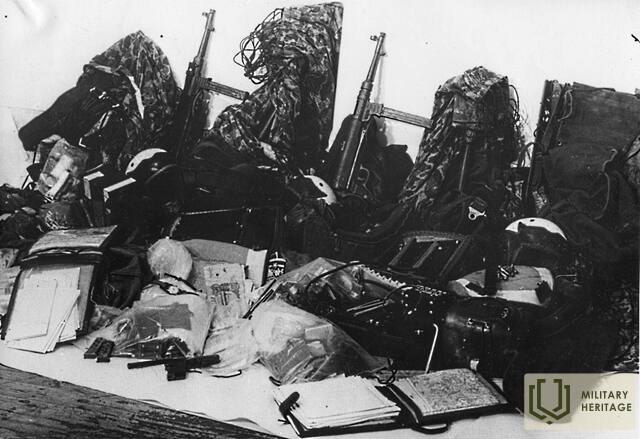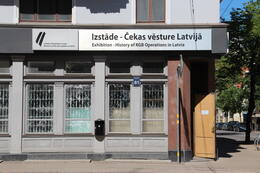Alfred Riekstins, nicknamed "Imants", dies as a result of betrayal by a Soviet double agent

Alfred Riekstins, a Latvian legionnaire, was recruited to work with the US intelligence agency, the CIA, after World War II.
Alfred Riekstins (nickname "Imants", for communication with US government institutions "Ogor A. Feldman", cryptonym CAMUSO/1). Riekstins was born in 1913 in Sabile, after graduating from Sabile Elementary School he worked in the fields on the farm of his godfather Fričis Lagzdins in Dreimaņi, Abava parish.
While fighting in the Latvian Legion, he served up to the rank of lieutenant. For his heroism in battle, he was awarded the Knight's Cross of the Iron Cross, the Iron Crosses of the 2nd and 1st classes, the Infantry Assault Medal, the Close Combat Medal, and the Wound Medal. In May 1945, at the time of Germany's capitulation, he managed to reach Sweden by the last boat from Courland. In Sweden, disguising himself as a civilian allowed him to avoid internment in a prisoner of war camp and subsequent extradition back to the USSR.
In 1951, agreed to cooperate
with the British and American secret services, in order to obtain information necessary for the Allies by operating in the territories occupied by the USSR and indirectly contribute to the restoration of Latvian independence. Riekstiņš was divided into a group of five men, who were planned to be secretly transported to Latvia. Together with several other Latvians, he was trained at US intelligence schools in Bavaria, West Germany.
On August 30, 1952, Riekstins, under the nickname "Imants", arrived in Courland. Together with two other Latvians — Edvīns Ozoliņš ("Herbert") and Nikolajs Balodis ("Boris") — he was dropped in the Priekule area by a twin-engine plane sent by the US intelligence service.
"Imants" and "Herberts" secretly went at night to the "Dreimaņi" house near Sabile, which was already well known to Riekstins. However, after only four days, the house was surrounded by Cheka troops. On September 11, 1952, after a short shootout, realizing the futility of resistance, Riekstins used the potassium cyanide ampoule he had been given and committed suicide. Edvīns Ozoliņš came out and announced that he was a USSR agent with the nickname "Pilot".
https://www.lsm.lv/raksts/dzive--stils/vesture/kgb-slepenie-arhivi.-spiegu-speles-latvija-cia-agenti-psrs-dienesta.a261845/
Uldis Neiburgs. About Latvia to the last// Guest of the House, No. 17 (October 23, 2009)
Related timeline
Related objects
Exhibition in the KGB Building "History of KGB Operations in Latvia"
The former USSR State Security Committee (commonly known as Cheka) building is open for visitors. Here chekists imprisoned, interrogated and murdered Latvian citizens who were considered opponents by the occupation regime. There is also an exhibit from the Latvian Occupation Museum on the activities of Cheka in Latvia. Guided tours of the prison cells, corridors, basement and courtyard are available. The house was built in 1911 and it is one of the most beautiful buildings in Riga. Called the ‘Corner House’ by the people, it was the scariest symbol of the Soviet occupation regime in Latvia, and also one of the pillars of power of the USSR. Cheka operated from the Corner House during the occupation from 1940 to 1941 and then again from 1945 to 1991. Tens of thousands of Latvians were affected by direct political persecution. The fight against enemies of Soviet rule continued also after World War II. Cheka’s approach towards its operation slightly changed after Stalin’s death. Physical torture was replaced by psychological terror. The majority of Cheka agents were Latvians (52%). Russians were the second largest group – 23.7%. 60.3% of the agents were not members of the Communist Party. 26.9% of the agents had higher education. The system was designed in a way to involve local people and thus have greater control over the society. Staff documents and service records are located in Russia. And these materials have not been made available to Latvian authorities and researchers.







